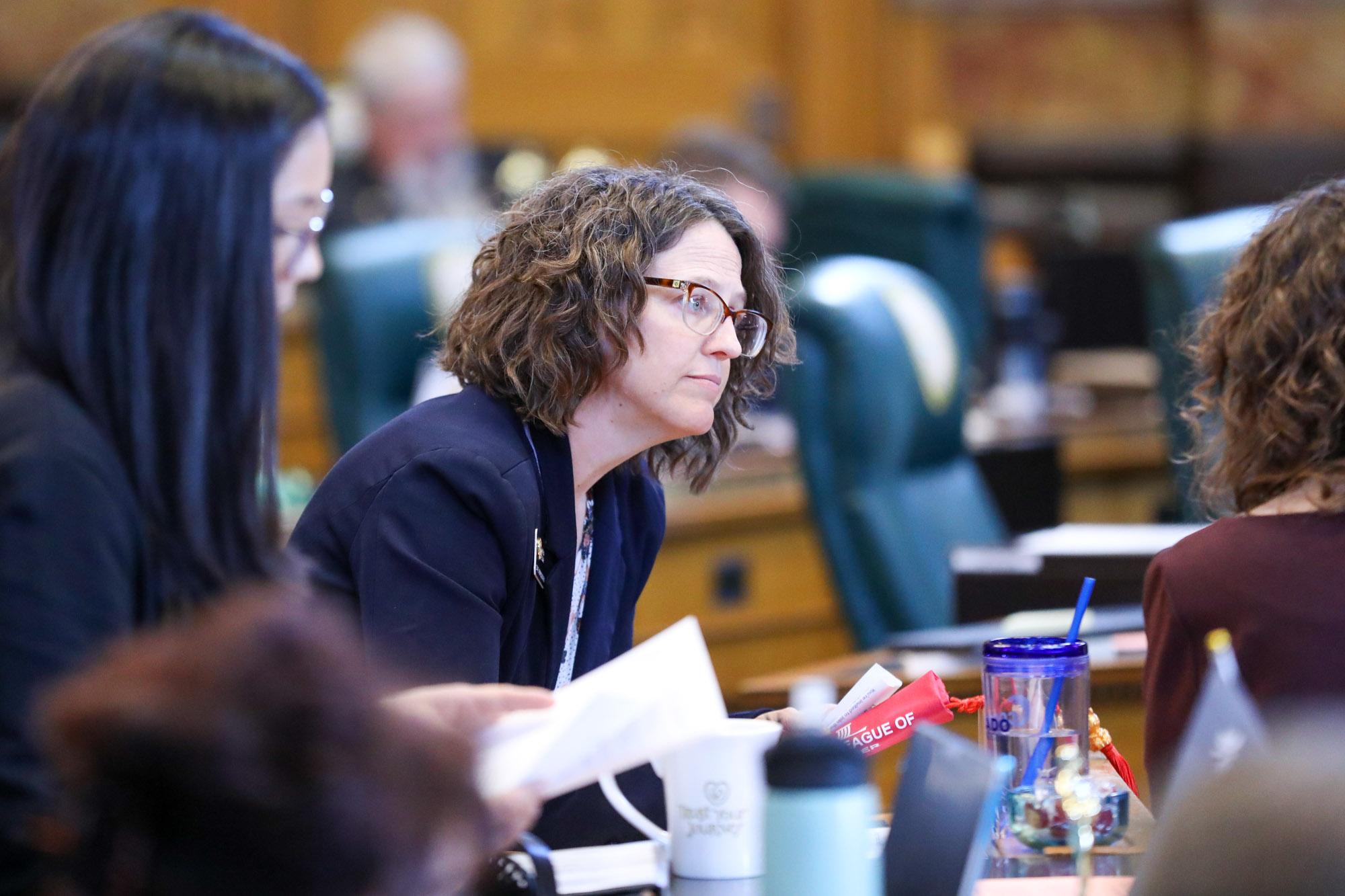
Updated 7:40p.m., May 11, 2022
A bill to grant new organizing rights to employees of county governments has won approval from both chambers of the legislature and will soon go to Gov. Jared Polis for a final signature.
“This bill stands up for the people who work every day in these communities,” said Majority Leader Daneya Esgar, a Democratic sponsor of SB22-230, just before it passed the House.
The bill has been reduced significantly from its original form, when Esgar and Senate President Steve Fenberg proposed a sweeping measure that would cover hundreds of thousands of employees of cities, libraries, schools and more.
Over the last five months, it was cut and cut again amid opposition from local leaders, Polis and others. The final bill will cover a portion of the state’s estimated 38,000 county workers, but it and also excludes dozens of public employees in the state’s least populous counties.
In the final days of the session, it was cut once more; in a late-night session last Friday, Democrats agreed to exclude workers in the state’s 14 least-populous counties from the bill’s requirements. It was a compromise meant to ease opposition from Republicans, who had prepared hundreds of amendments that could have eaten up precious hours left in the waning legislative session.
“That was kind of a deal struck between rural Republicans, rural Democrats, and really pushing the majority,” said state Rep. Matt Soper, a Republican from Delta County.
Narrowed by a thousand cuts
For some labor advocates, it was the latest of a thousand cuts that have slowly killed the bill’s promise to broadly empower public workers. From starting out with the sweeping potential to rewrite organizing rules for hundreds of thousands of workers, its potential impact had been reduced to a few tens of thousands.
“It’s a baby step forward,” said Jennifer Sherer, a labor expert at the left-leaning Economic Policy Institute. But the bill “still leaves Colorado lagging behind the majority of states with stronger rights for public sector workers.”
Republicans and some county representatives, however, view even the limited bill as costly and unnecessary.
“We have one part-time HR person who is also our assistant county manager,” said Park County Commissioner Amy Mitchell at an earlier committee hearing. Dealing with collective bargaining could cost $400,000, she said — assuming the county’s 200 employees decided to unionize.
“This means we will have to spend money we do not have,” she said.
With barely 24 hours left in session, the bill still had not gotten its last few necessary votes. It has passed the Senate but needs a final vote in the House.
"I feel good. I think we'll get it across the finish line today or tomorrow," said Majority Leader Daneya Esgar, a sponsor.
So, what does the nearly final bill do?
In short, the bill allows workers to freely communicate and work together to raise concerns and get organized. If they can get enough support, workers employed by most of the state’s counties can form “bargaining units” — essentially, adding some portion of the workforce to a union.
The counties must then acknowledge and negotiate “in good faith” with those bargaining units. Ideally, they would come to a compromise that satisfies county leaders and their employees.
“This is about power dynamics and making sure workers have the right to speak up,” Esgar said last month.
If negotiations come to an impasse, the county and the union would have to go through mediation, and a “fact finder” could eventually recommend a deal. Some county governments contend that this process could cost millions, an expense that could cut into their ability to provide services for residents, while Esgar argues it’s a crucial way to surface the concerns of workers and improve the workplace.
But there are limits to those new negotiations. The county governments will not be required to accept the results of the mediation process — in other words, there will be no “binding arbitration.” And workers will not be allowed to go on strike, limiting their ability to pressure their employer into making changes.
That’s led some advocates to complain that counties could simply continue to reject the results of negotiations. That concern led the members of Communications Workers of America Local 7799 to vote not to support the bill in the end, said vice-president Alex Wolf-Root.
“If you have nothing with binding arbitration and you make it illegal for workers to flex their power (through strikes), you take any leverage they have for management and the bosses to accept any of this,” Wolf-Root said last month.
EPI’s Sherer agreed that the lack of those powers will “limit” workers’ leverage. But the negotiation and organizing process still could give them a chance to build public support and political influence to get a deal done.
“It’s left to them to bring their collective pressure and in some cases marshal allies from among the residents and the public they serve locally,” Sherer said.
Where will it apply?
Where will it apply?
With the latest changes, the bill will guarantee rights for workers in 36 of the state’s 64 counties.
The bill excludes 24 counties where the population was less than 7,500 in the most recent Census. Several others — Denver, Broomfield, Pitkin and Weld — have also been excluded from the mandate because of their unusual government structures, although any county may still choose to grant the rights to its workers.
Esgar, who is term-limited, said that the bill could be a political foundation for future legislators.
"All workers deserve this, and we started with state employees, and we're going with county employees next," Esgar said. "And I think we really need to be realistic about the idea of (covering) all public employees, because they all deserve that."









